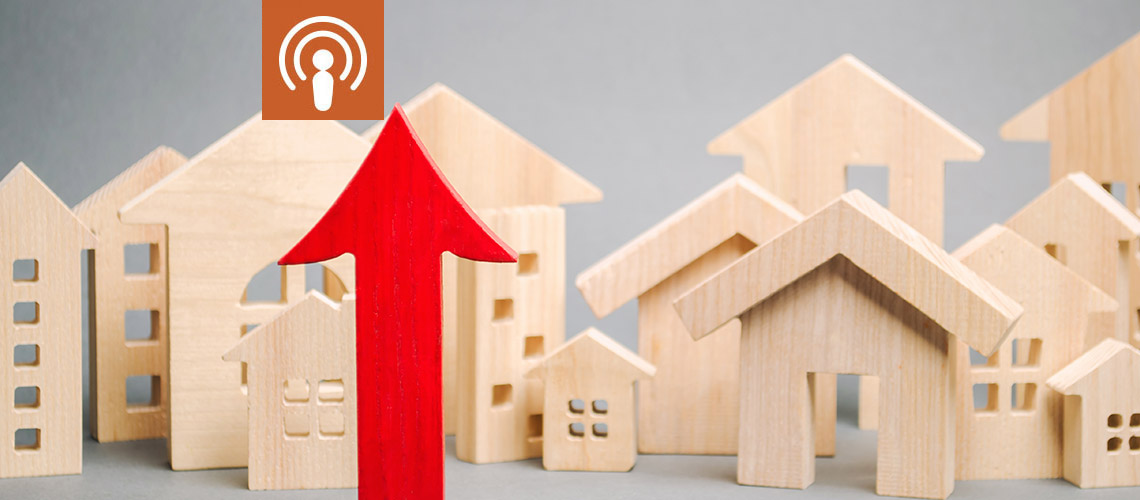Did you make New Year’s resolutions for 2021? What were they? Were you planning to get more money? Become healthier?
How many have you broken already?
My resolution of eating more healthily didn’t last long. But I know that a lot of people are planning to make 2021 a great year considering the challenges and how many opportunities were lost in 2020.
So, in today’s episode, I’ve got two segments to help you if you’re interested in property investment. 
The main segment is a long, detailed discussion about gentrification.
You see…If you understand how gentrification works and what to look for, you can consistently outperform the market with your investments because of the cycle of the suburb.
Then in my mindset message, I’m going to ask you where you’re going to be in ten years’ time.
Because wherever it is, you’re surely going to be there.
But are you deciding how you’re going to get there and if you’re doing the right things to get to the right spot?
Gentrification and the cycle of the suburb
googletag.cmd.push(function() { googletag.display(‘div-gpt-ad-1599569002292-0’); });
Gentrification represents a powerful opportunity to increase both your property returns in the short term, and your overall real estate wealth in the long term.
There is no such thing as one property market in Australia – instead, there are multiple property markets, each with their own specific drivers and fundamentals.
While each state has its own property cycle, suburbs have their own cycles as well.
These suburbs are “gentrifying” – which means that they are going through a period of improvement.
In general, capital growth in these areas will outperform the averages.
These areas go from and ugly ducklings to a beautiful swan and therefore the homes in these suburbs increase in capital value faster than the average.
As a property investor, if you can identify an area at the earlier stages of gentrification and buy while prices are more affordable – you stand to benefit from ongoing capital growth.
What caused this gentrification?
One of the main factors behind this revitalisation was the exodus of manufacturing to the suburbs, driven in part by cheaper transport and better roads.
At the same time, many migrant workers departed to the suburbs to live in detached houses with front and back yards. 
Interestingly at around the same time, our society started to experience higher education levels, which necessitated more people being closer to campuses.
These were usually in or near the CBD, and so being close to the city became more desirable.
The diversity of serviced-based jobs located in the CBD, together with the increasing number of women in the workforce and declining household sizes, all made the prospect of living in those smaller properties near the city more attractive to a larger cohort of potential buyers and renters.
Gentrification is a change in the fortunes of a suburb as it is discovered by a higher income demographic, which slowly pushes out the lower-income residents.
This usually occurs where working-class people, tenants and migrants move out as the land becomes too valuable and more affluent people move in renovating the old homes and improving the surrounding shops.
These new, more affluent residents invest time and money improving their new neighbourhood, pushing up prices and rents.
So how do you spot a suburb that is in the process of going through this metamorphosis?
One unusual and unexpected property research strategy to help in this regard might be through look at the dogs walking around the neighbourhood.
Yes, you read that correctly – I am suggesting that you look to the dog breeds for a sneaky clue! 
To make things clear: just because a suburb has cheap properties, that doesn’t mean it’s destined to become the next growth area.
Some suburbs are inexpensive for a reason and won’t improve because of various socio-economic factors.
There might be too much industry in the area, a lot of social or public housing or possibly an ongoing crime, gang or drug problem.
Or maybe they are outlying suburbs with poor infrastructure, facilities or public transport, and little prospect for change.
On the other hand, the type of suburb to look for is one that is relatively cheap today but has the potential for future capital growth.
Some of the major drivers of capital growth are:
Proximity to the CBD or the water.
Adjoining a more expensive neighbourhood so it can benefit from the ripple effect.
Desirable amenities such as good public transport, a large shopping centre, or within the catchment of a highly prized public school.
Older attractive houses with character features, that are ready to be renovated.
Areas where governments are investing in local infrastructure or beautification programs.
Some of the steps you can take to find a suburb that is improving are to go for a drive and a walk. 
You’ll “know it when you see it” because you’ll find evidence that people with money are moving in.
They will be spending large amounts of money renovating or extending their homes.
There will be white (the new black) SUV’s parked in the driveways, rather than old Ford Falcons and Holden utes.
The nature of the shops will be changing. The gyms are offering Pilates; the cafés sell cold press coffee; and the deli’s serve goat’s cheese pizza.
Gentrifying suburbs will be in the inner and middle-ring suburbs of capital cities, where people of higher social status want to live (within around 40km of the CBD).
As a property investor, if you can pick an area going through gentrification, one that’s shifting from dreary to in demand, you stand benefit from its accelerated growth.
And the good news is that you don’t have to get your timing perfect – the gentrification process lasts a number of decades.
Links and Resources:
Get the team at Metropole to help build your personal Strategic Property Plan Click here and have a chat with us
Read more here: The Power of Gentrification. How to use the cycle of the suburb to boost your investment returns
Some of our favourite quotes from the show:
“While this may improve the suburb, gentrification is something else altogether: it is when more affluent people move into the area.” – Michael Yardney 
“If you want to own the type of property that’s going to outperform, the inner and the middle-ring suburbs are the place that you should be looking at, not where the average investor looks.” – Michael Yardney
“Where are you going? Because you know what? Ten years from now, you’re surely going to arrive. But the question is, where?” – Michael Yardney
PLEASE LEAVE US A REVIEW
Reviews are hugely important to me because they help new people discover this podcast. If you enjoyed listening to this episode, please leave a review on iTunes – it’s your way of passing the message forward to others and saying thank you to me. Here’s how
googletag.cmd.push(function() { googletag.display(‘div-gpt-ad-1599572187548-0’); });
Read more: propertyupdate.com.au

